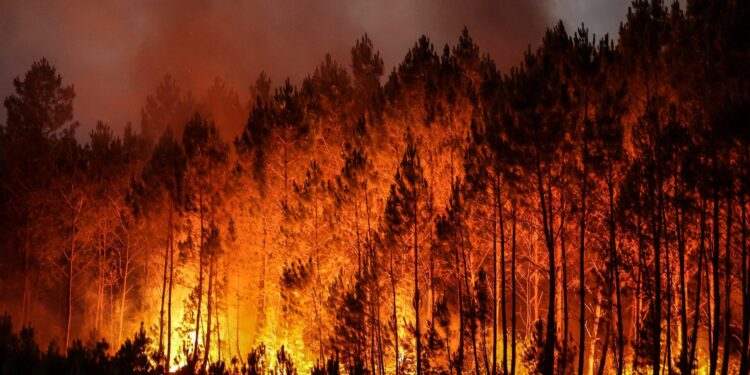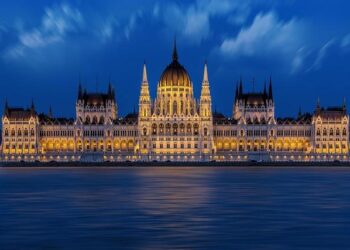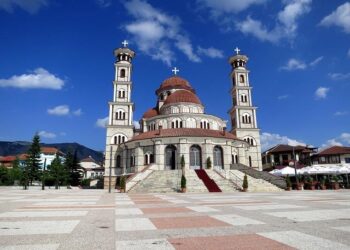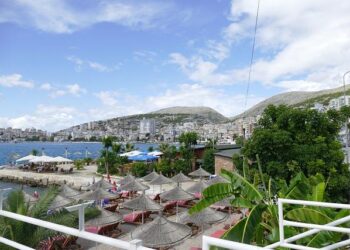Europe is grappling with a unprecedented wave of wildfires that have scorched vast stretches of forests and targeted popular tourist destinations, forcing evacuations and disrupting travel plans. As temperatures soar amid a relentless heatwave, emergency services across the continent are stretched thin, battling blazes that threaten both natural landscapes and local economies. This latest spate of wildfires underscores the growing risk posed by climate change, raising urgent concerns over environmental damage and the future of tourism in some of Europe’s most cherished regions.
Europe’s Wildfires Devastate Iconic Tourism Destinations and Natural Reserves
Flames have relentlessly swept across vast swathes of Europe this summer, leaving behind a trail of destruction that has alarmed local communities and global observers alike. Among the hardest hit are some of the continent’s most cherished tourism hotspots and protected natural reserves. Visitors were forced to evacuate popular coastal regions while national parks, home to rare flora and fauna, have suffered extensive ecological damage. The intense heatwaves coupled with prolonged drought conditions have created a tinderbox, igniting hundreds of wildfires that continue to challenge emergency response teams. Reports from affected regions describe scenes of dense smoke engulfing famous landmarks and roads, with authorities warning that the damage could take decades to repair.
The economic consequences weigh heavily on local economies dependent on tourism. Hotels, hiking trails, and cultural sites have either closed temporarily or sustained irreversible harm. Below is a summary of some of the key locations impacted:
- Portugal’s Algarve Coast: Thousands evacuated, with seaside resorts damaged by fire and smoke.
- France’s Provence Region: Historic villages and vineyards plagued by thick smoke and fire threats.
- Spain’s Sierra Nevada: National park areas scorched, prompting wildlife rescue operations.
| Region | Tourism Impact | Wildlife Threatened |
|---|---|---|
| Algarve, Portugal | Resort closures, flight disruptions | Endangered Iberian lynx |
| Provence, France | Vineyard damage, hike trail closures | Rare Mediterranean plants |
| Sierra Nevada, Spain | Park area burnt, tourism suspended | Mountain goats and eagles |
Environmental Impact and Economic Fallout from the Blaze on Local Communities
The recent wildfires sweeping across Europe’s prime tourism regions have wrought devastation beyond the immediate loss of flora and fauna. Entire communities face a grim economic reality as key travel seasons are disrupted, with local businesses-from hotels to restaurants-reporting sharp declines in bookings and foot traffic. The loss of forested areas not only diminishes the scenic allure that attracts visitors but also disrupts livelihoods dependent on nature-based tourism, leaving many residents grappling with unemployment and financial uncertainty. Authorities warn that the fallout could persist for years, affecting recovery and rebuilding efforts across interconnected sectors.
Environmental degradation has compounded the crisis, as the destruction of large swathes of woodland undermines biodiversity and accelerates soil erosion, increasing vulnerability to future fires and floods. Experts highlight the critical role these forests play in carbon sequestration and climate regulation, meaning the economic hits are paralleled by a broader environmental cost. Local governments have begun implementing emergency support programs, but the scale of damage challenges resource allocation and long-term sustainability strategies.
- Tourism revenue losses: Estimated at over 40% drop during peak season
- Unemployment spikes: Seasonal workers most affected
- Habitat destruction: Over 150,000 hectares burned
- Air quality deterioration: Health alerts issued in affected towns
| Sector | Impact Level | Projected Recovery Time |
|---|---|---|
| Tourism | High | 2-3 years |
| Agriculture | Moderate | 1 year |
| Forestry | Severe | 5+ years |
| Local Businesses | High | 1-2 years |
Urgent Calls for Stricter Fire Management Policies and Sustainable Tourism Practices
Wildfires’ devastating impact on Europe’s iconic tourism destinations and ancient forests calls for an immediate overhaul of existing fire prevention and response strategies. Experts warn that without enhanced regulations and investment in advanced monitoring technologies, the frequency and intensity of these blazes will only escalate. Local authorities and environmental agencies must collaborate closely to implement fire-resilient infrastructure, incentivize controlled burns, and improve emergency evacuation plans to safeguard both visitors and residents.
Simultaneously, tourism operators are urged to adopt sustainable practices that reduce environmental strain and minimize fire risks. This includes:
- Limiting tourist numbers in vulnerable regions, especially during peak fire seasons
- Promoting eco-friendly accommodations with fire safety certifications
- Educating tourists on fire hazards and responsible behaviors
| Policy Focus | Potential Benefits | Key Stakeholders |
|---|---|---|
| Enhanced Fire Monitoring | Quicker detection and response | Government, Tech Firms |
| Sustainable Tourism Limits | Reduced environmental impact | Tour Operators, Local Communities |
| Community Education Programs | Increased awareness & safety | NGOs, Schools, Visitors |
To Wrap It Up
As Europe continues to grapple with unprecedented wildfires scorching popular tourist destinations and vital forest ecosystems, the long-term implications for the region’s environment and economy remain uncertain. Authorities face mounting pressure to enhance firefighting capabilities and implement more resilient climate policies to mitigate future risks. Meanwhile, communities and travelers alike are urged to stay informed and prioritize safety as the summer fire season unfolds. The coming months will be critical in shaping Europe’s response to an increasingly volatile climate reality.
















